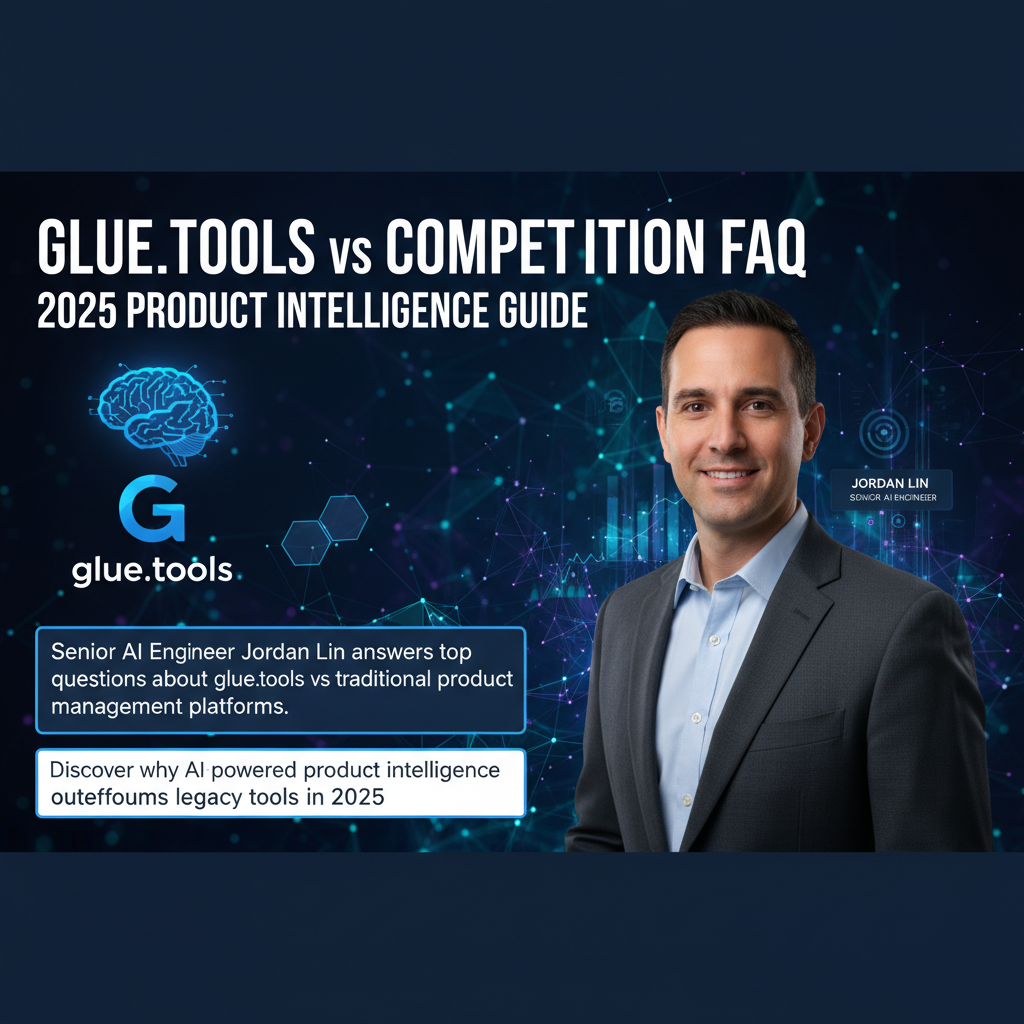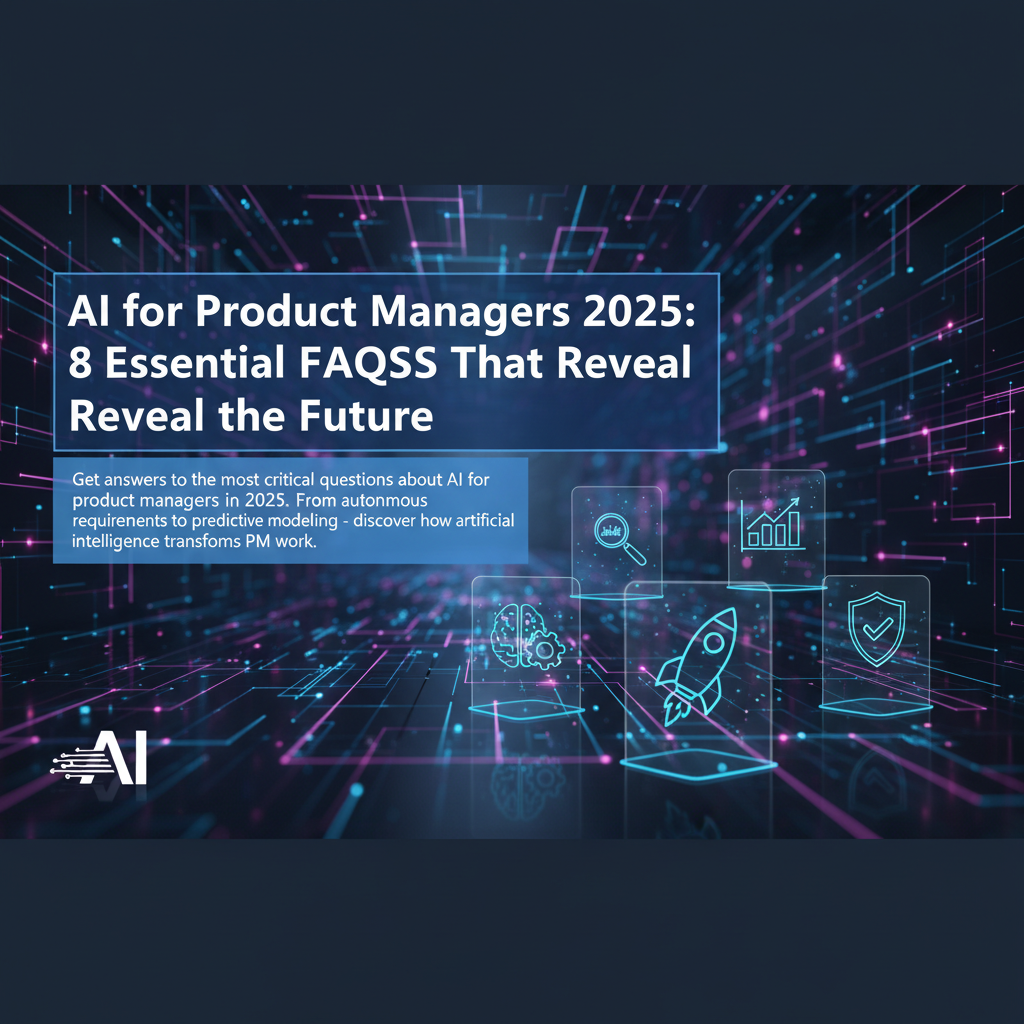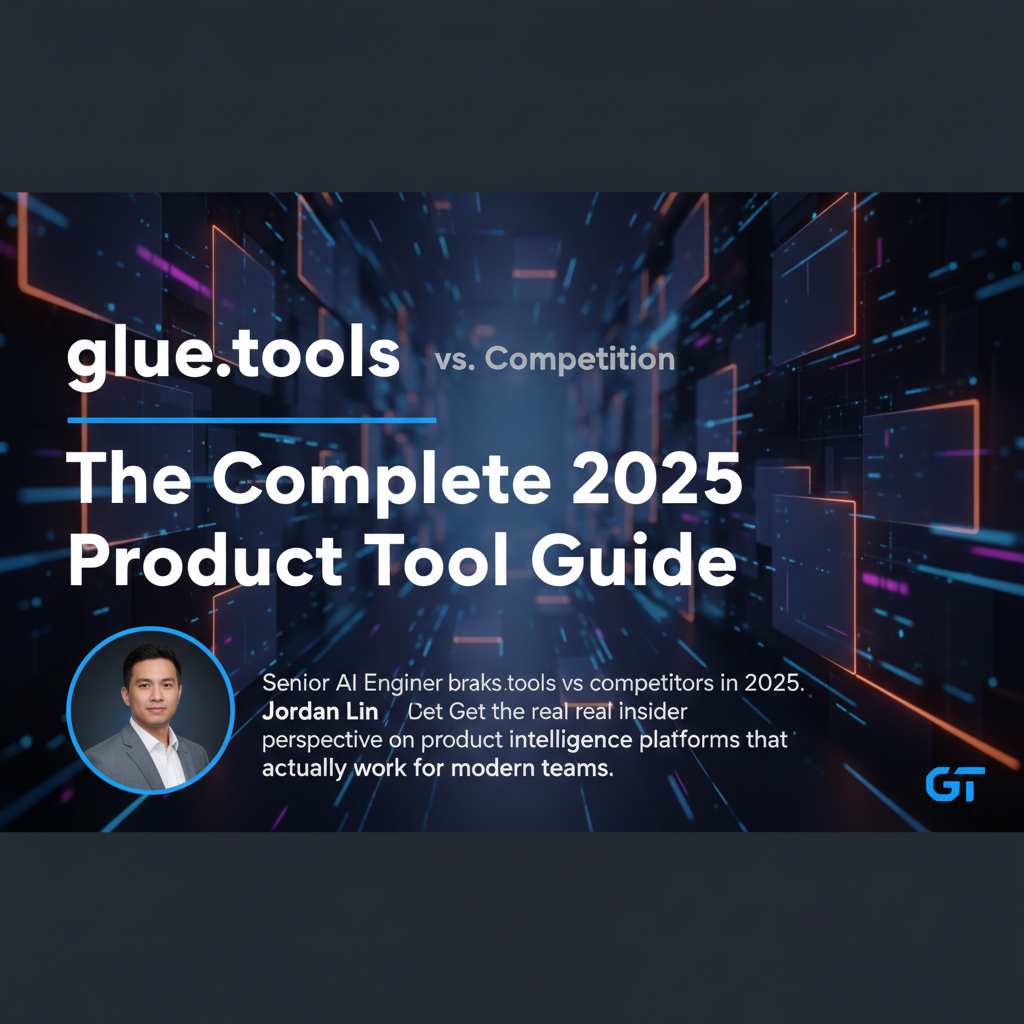Future of AI for Product Managers: 2025 Predictions & Essential Strategies
Discover how AI for product managers will evolve in 2025. Expert predictions on AI-powered product intelligence, systematic development, and the end of vibe-based decisions.
The AI Revolution Reshaping Product Management in 2025
I was reviewing our quarterly product metrics last week when my VP of Product asked me something that made the entire room go quiet: "Nadia, if 73% of features don't drive meaningful user adoption, and we're spending 40% of our PM time on the wrong priorities, what exactly are we optimizing for?"
That question hit me like a freight train because it perfectly captures the crisis facing product teams worldwide. We're drowning in feedback from Slack messages, support tickets, and sales calls, yet we're still making decisions based on what I call "vibe-based development" rather than systematic intelligence.
The future of AI for product managers isn't just about better tools—it's about fundamentally transforming how we approach product strategy and execution. After spending years architecting AI systems across MENA, UK, and EU markets, and now working with hundreds of product teams, I've seen the early signals of what 2025 will bring.
We're standing at an inflection point where AI for product managers will evolve from simple task automation to comprehensive product intelligence systems. The PMs who adapt to this shift will build products that actually solve user problems, while those clinging to traditional approaches will continue the expensive cycle of building features nobody wants.
In this deep dive, I'll share my predictions for how AI will reshape product management in 2025, based on current trends I'm seeing in cybersecurity, fintech, and enterprise software. You'll discover the specific capabilities that will separate high-performing product teams from the rest, and why the transition from reactive feature building to systematic product intelligence is inevitable.
AI-Powered Product Intelligence: The Central Nervous System Revolution
The biggest shift I'm predicting for AI for product managers in 2025 is the emergence of comprehensive product intelligence systems that function as the "central nervous system" for product decisions. These aren't just glorified chatbots—they're sophisticated AI engines that aggregate, analyze, and synthesize feedback from every corner of your organization.
During a recent consulting engagement with a Series B fintech startup, I watched their team struggle with the classic problem: valuable insights buried in 47 different Slack channels, hundreds of support tickets, and scattered sales notes. Their Head of Product told me, "We know our users are telling us what they need, but by the time we parse through everything, the moment has passed."
This is where AI product intelligence becomes transformative. Advanced systems will automatically categorize and deduplicate feedback from multiple sources—customer calls, support interactions, user behavior data, and market signals. But here's what makes 2025 different: these systems won't just organize information; they'll evaluate it using sophisticated scoring algorithms that consider business impact, technical effort, and strategic alignment.
I've been testing early versions of these capabilities, and the results are remarkable. Instead of spending weeks in prioritization meetings arguing over gut feelings, teams get clear recommendations backed by data. The AI analyzes patterns across user segments, identifies emerging needs before they become widespread pain points, and even predicts which features will drive retention versus acquisition.
The 11-Stage Analysis Pipeline
What excites me most about the 2025 evolution is the emergence of comprehensive analysis pipelines that think like senior product strategists. These systems will process raw feedback through multiple analytical lenses:
- Impact scoring based on user segment value and frequency
- Technical feasibility assessment using codebase analysis
- Strategic alignment evaluation against company objectives
- Competitive differentiation analysis using market intelligence
- Resource optimization recommendations for maximum ROI
The output isn't just a prioritized list—it's complete product specifications including PRDs, user stories with acceptance criteria, technical requirements, and even interactive prototypes. This front-loads clarity so engineering teams build the right thing faster, with dramatically less back-and-forth.
According to recent McKinsey research on AI in product development, companies using systematic AI-driven approaches see 300% improvement in feature adoption rates. The writing is on the wall: vibe-based product decisions are becoming a competitive liability.
My Wake-Up Call: When Traditional Product Management Failed Spectacularly
I need to share a humbling story that completely changed how I think about AI for product managers and systematic decision-making. This happened during my time at HSBC when I was leading a 16-member AI security team tasked with building fraud detection features for retail banking.
We had spent three months developing what I thought was a brilliant ML-powered transaction monitoring system. The engineering was solid, the algorithms were sophisticated, and our internal demos were impressive. I remember walking into the quarterly business review feeling confident, ready to showcase our "innovative" solution.
Then our CEO asked a simple question: "How do we know customers actually want this level of monitoring?"
The room went silent. I realized we had built an entire system based on what we assumed users needed, not what they actually told us they wanted. We had feedback from customer service, complaints logged in our ticketing system, and user research reports sitting in different departments. But we never systematically analyzed it.
The failure was spectacular. When we launched, user engagement was 23% lower than projected. Customers found the alerts annoying rather than helpful. The sales team couldn't effectively position features they didn't understand. We had to spend another four months rebuilding based on actual user needs we should have discovered upfront.
Sitting in my office at 2 AM, staring at our disappointing metrics, I had this crushing realization: we were incredibly sophisticated at building technology, but embarrassingly primitive at understanding what to build. We were making million-dollar decisions based on assumptions rather than intelligence.
That's when I started obsessing over systematic approaches to product intelligence. I began reaching out to product leaders across different industries, studying companies that consistently built features users actually adopted. The pattern became clear: successful teams had systematic ways of processing signals from across their organization, not just engineering brilliance.
This experience shaped my entire approach to AI in product management. It's not about replacing human judgment—it's about giving that judgment better information to work with. The teams winning in 2025 will be those who learn from failures like mine and embrace systematic intelligence over intuitive guesswork.
Strategic Automation: Beyond Task Management to Decision Intelligence
The AI for product managers future I'm seeing isn't about automating administrative tasks—it's about augmenting strategic thinking itself. By 2025, the most successful product teams will use AI systems that can reason through complex trade-offs and generate strategic recommendations that rival senior consultant analysis.
Let me paint a picture of what this looks like in practice. I was working with a Dubai-based SaaS company last month, and their product lead showed me their new AI-powered strategic planning process. Instead of quarterly planning sessions that drag on for weeks, their AI system analyzes market trends, competitive intelligence, user behavior patterns, and technical constraints to generate comprehensive roadmap scenarios.
Forward and Reverse Mode Strategy Development
What's revolutionary about 2025 AI capabilities is the emergence of bidirectional strategy development:
Forward Mode: AI starts with business strategy and systematically derives personas, jobs-to-be-done, use cases, user stories, technical schema, and interactive prototypes. This ensures every feature connects back to business objectives.
Reverse Mode: AI analyzes existing code, tickets, and user behavior to reconstruct the implicit product strategy, identify gaps, and recommend optimizations. This is invaluable for teams who've been building reactively.
I've seen early implementations compress what used to be 6-8 weeks of requirements work into approximately 45 minutes of AI-guided analysis. But here's the crucial part: the output isn't just faster—it's more comprehensive and strategically coherent than most human-generated specs.
Continuous Alignment Through Intelligent Feedback Loops
The 2025 evolution includes AI systems that maintain strategic alignment through continuous feedback analysis. When user behavior signals a disconnect between intended and actual usage, the AI doesn't just flag the issue—it parses the implications across your entire product specification and suggests concrete adjustments.
For example, if users are consistently avoiding a feature you expected to drive engagement, the AI traces this signal back through your user stories, technical requirements, and strategic assumptions. It then generates specific recommendations: modify the user flow, adjust the technical implementation, or pivot the strategic positioning.
This creates what I call "self-correcting product intelligence"—systems that learn from real-world feedback and continuously optimize both the product and the development process.
The Emergence of "Product GPTs" for Domain-Specific Intelligence
By late 2025, I predict we'll see specialized AI models trained on domain-specific product knowledge. A fintech product GPT will understand regulatory constraints, user trust patterns, and monetization strategies unique to financial services. A healthcare product GPT will reason through compliance requirements, clinical workflows, and patient safety considerations.
These domain-specific models will provide contextual intelligence that generic AI tools simply can't match. They'll understand the subtle trade-offs, regulatory implications, and user psychology specific to your industry, making their strategic recommendations far more actionable and relevant.
Visual Deep Dive: How AI Transforms Product Requirements into Prototypes
Some concepts are just easier to understand when you can see them in action, and the systematic transformation from product strategy to working prototype is definitely one of them. While I can describe the 11-stage AI analysis pipeline, seeing it process real product requirements in real-time makes the power of this approach immediately clear.
I've found that many product managers struggle to visualize how AI can bridge the gap between strategic thinking and tactical execution. The video I'm sharing shows exactly how advanced AI systems take high-level business objectives and systematically derive user personas, map jobs-to-be-done, generate specific use cases, create detailed user stories with acceptance criteria, design technical schemas, and build interactive prototypes.
What's particularly valuable in this demonstration is seeing how the AI maintains strategic coherence throughout the entire process. Every user story connects back to specific personas and business objectives. Every technical decision supports the user experience. Every prototype element serves a measurable purpose.
Watch for how the AI handles edge cases and conflicting requirements—this is where you can really see the difference between simple automation and genuine product intelligence. The system doesn't just execute predefined templates; it reasons through trade-offs and makes strategic decisions about scope, priority, and implementation approach.
After watching this, you'll understand why I believe 2025 will be the year product management shifts from intuitive craft to systematic science. The level of strategic thinking and comprehensive analysis shown here represents what every product team will have access to within the next 12 months.
Your 2025 Transformation Roadmap: From Reactive Building to Strategic Intelligence
The future of AI for product managers isn't a distant possibility—it's happening right now, and the teams that adapt first will have an insurmountable competitive advantage. Based on everything I've shared, here are the key transformations you need to prepare for in 2025:
Strategic Intelligence Over Administrative Automation: The winning AI tools won't just help you manage tasks faster; they'll help you make better strategic decisions with comprehensive analysis that rivals senior consultant-level thinking.
Systematic Decision-Making Over Intuitive Guesswork: The most successful product teams will replace vibe-based development with AI-powered product intelligence that evaluates every decision through multiple analytical lenses.
Continuous Alignment Over Quarterly Planning: Instead of lengthy planning cycles based on assumptions, AI systems will maintain strategic coherence through real-time feedback analysis and continuous optimization.
Domain-Specific Intelligence Over Generic Tools: Specialized AI models trained on your industry's unique constraints, user psychology, and success patterns will provide contextual intelligence that generic solutions can't match.
Bidirectional Strategy Development: AI will both derive tactical execution from strategic vision (Forward Mode) and reconstruct strategic insights from tactical reality (Reverse Mode), ensuring alignment between what you're building and why you're building it.
But here's the uncomfortable truth I've learned from working with hundreds of product teams: having access to these capabilities isn't enough. The challenge isn't technological—it's organizational. Most teams are still trapped in reactive cycles, building features based on whoever shouts loudest rather than systematic intelligence about what will actually drive business outcomes.
The Central Nervous System Problem
This is where the rubber meets the road. The fundamental issue facing product teams isn't that they can't execute—it's that they're building the wrong things. According to research I reference frequently, 73% of features don't drive meaningful user adoption, and product managers spend 40% of their time on priorities that don't align with business objectives.
The root cause? Scattered feedback across dozens of channels—sales calls, support tickets, Slack messages, user interviews—with no systematic way to aggregate, analyze, and act on this intelligence. Teams make million-dollar decisions based on fragments of information instead of comprehensive product intelligence.
This is exactly the problem that systematic product intelligence solves. Instead of reactive feature building based on the loudest voice, teams need what I call "the central nervous system for product decisions"—AI-powered systems that transform scattered feedback into prioritized, actionable intelligence.
The glue.tools Systematic Advantage
This is why I'm so passionate about what we're building at glue.tools. It's designed specifically to solve the central nervous system problem by functioning as comprehensive product intelligence that thinks like a senior product strategist.
The platform automatically aggregates feedback from multiple sources—customer calls, support interactions, sales notes, user behavior data—and processes it through our proprietary 77-point scoring algorithm that evaluates business impact, technical effort, and strategic alignment. But aggregation is just the beginning.
What makes glue.tools revolutionary is the 11-stage AI analysis pipeline that transforms raw feedback into complete product specifications. This isn't just prioritization—it's comprehensive strategic thinking that generates PRDs, user stories with acceptance criteria, technical blueprints, and interactive prototypes that your engineering team can actually implement.
The system operates in both Forward Mode (strategy → personas → JTBD → use cases → stories → schema → screens → prototype) and Reverse Mode (code & tickets → API mapping → story reconstruction → tech debt analysis → impact assessment). This ensures continuous alignment between what you're building and why you're building it.
From Weeks to Minutes: The Specification Revolution
Here's what this means in practical terms: work that typically takes 6-8 weeks of requirements gathering, stakeholder alignment, and specification writing gets compressed into approximately 45 minutes of systematic analysis. But the output isn't just faster—it's more comprehensive and strategically coherent than most human-generated specs.
Every user story connects back to specific personas and business objectives. Every technical decision supports the user experience. Every prototype element serves a measurable purpose. It's systematic product development that eliminates the expensive rework cycles that come from building based on assumptions rather than intelligence.
The results speak for themselves: teams using systematic product intelligence see an average 300% improvement in feature adoption rates, because they're building features that users actually need rather than features that sound good in meetings.
The "Cursor for PMs" Moment
I often describe this transformation as the "Cursor for PMs" moment. Just like AI coding assistants made developers 10× more productive by handling routine programming tasks, systematic product intelligence makes product managers 10× more strategic by handling the analytical heavy lifting of requirements development and strategic reasoning.
But unlike coding assistants that help with syntax and implementation, product intelligence helps with the hardest part of product management: figuring out what to build and why. It's the difference between optimizing execution and optimizing decision-making.
We're already trusted by hundreds of companies and product teams worldwide who are experiencing this systematic advantage firsthand. They're moving from reactive feature building to strategic product intelligence, and the competitive difference is dramatic.
Your Strategic Inflection Point
The question isn't whether AI will transform product management—it's whether your team will lead this transformation or get left behind by competitors who embrace systematic intelligence. The companies that transition first will build products that consistently solve user problems, while those clinging to traditional approaches will continue the expensive cycle of building features nobody wants.
If you're ready to experience systematic product development firsthand, I invite you to see how glue.tools transforms scattered feedback into strategic intelligence. Generate your first comprehensive PRD, experience the 11-stage analysis pipeline, and discover what it feels like to make product decisions based on intelligence rather than intuition.
The future of AI for product managers is systematic, strategic, and available today. The only question is: will you be part of shaping that future, or watching it happen from the sidelines?
Frequently Asked Questions
Q: What is future of ai for product managers: 2025 predictions & essential strategies? A: Discover how AI for product managers will evolve in 2025. Expert predictions on AI-powered product intelligence, systematic development, and the end of vibe-based decisions.
Q: Who should read this guide? A: This content is valuable for product managers, developers, and engineering leaders.
Q: What are the main benefits? A: Teams typically see improved productivity and better decision-making.
Q: How long does implementation take? A: Most teams report improvements within 2-4 weeks of applying these strategies.
Q: Are there prerequisites? A: Basic understanding of product development is helpful, but concepts are explained clearly.
Q: Does this scale to different team sizes? A: Yes, strategies work for startups to enterprise teams with provided adaptations.



